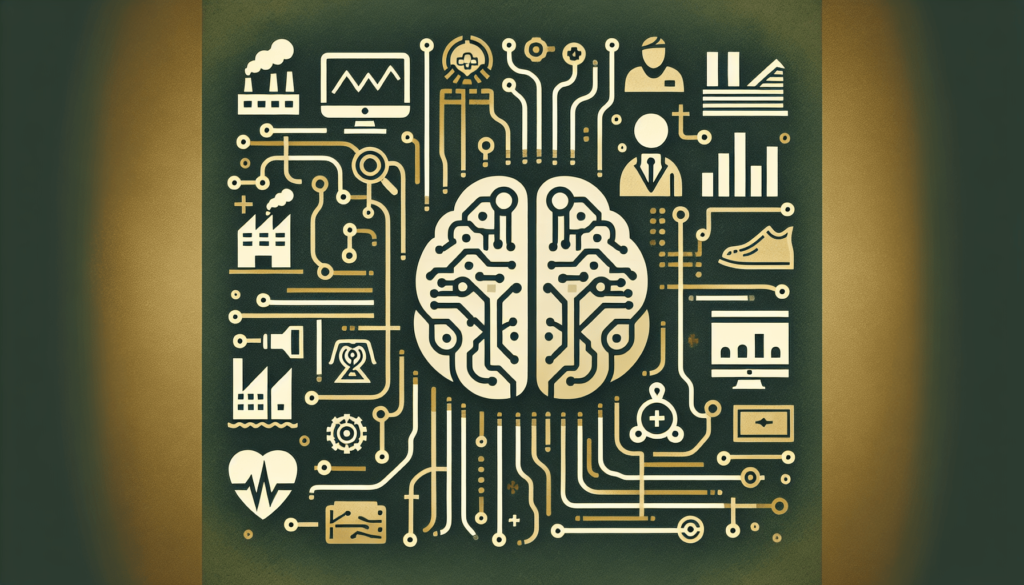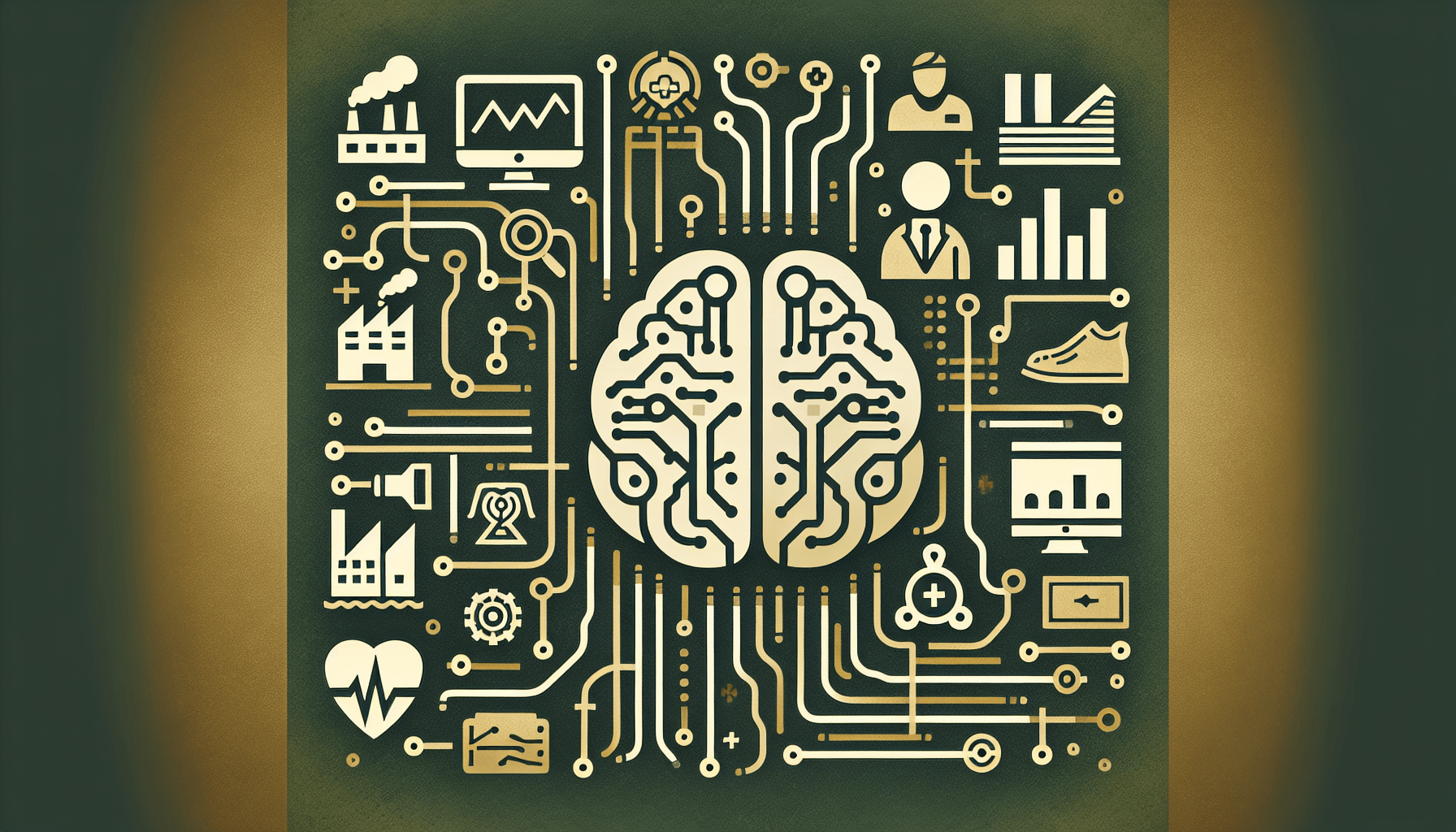Imagine a world where artificial intelligence (AI) is seamlessly integrated into every aspect of our lives, from self-driving cars to personalized virtual assistants. The potential benefits of AI are undeniable, but have you ever wondered about the price tag that comes with such advanced technology? In this article, we will explore the cost of implementing AI and delve into the various factors that contribute to this expense. Discover how businesses and industries are navigating the financial implications of AI and how you could be affected by the cost of this cutting-edge innovation. Get ready to uncover the true price of progress!
Introduction
Are you considering implementing AI into your business operations? Artificial intelligence has the potential to revolutionize how organizations function, improve customer experiences, and drive growth. However, it’s important to understand that integrating AI into your business requires careful planning and consideration, as well as a significant investment. In this article, we will explore the various costs associated with implementing AI, from initial investments in hardware and software to ongoing infrastructure and maintenance, as well as the importance of security, training, ethical considerations, and cost optimization.
Initial Investment
Hardware
Implementing AI requires powerful hardware to handle the computational needs of training and running AI models. The cost of initial hardware investment can vary depending on the scale and complexity of your AI implementation. It typically includes high-performance servers, GPUs (Graphical Processing Units) for accelerated computations, and specialized hardware like TPU (Tensor Processing Units) for deep learning applications.
Software
In addition to hardware, investing in AI software is essential for successful implementation. The cost of AI software depends on various factors like the type of AI algorithms or frameworks you intend to use and the level of customization required. It may include licenses for AI development platforms, data analysis tools, machine learning libraries, and specific software for tasks like natural language processing or computer vision.

Data Collection and Preparation
Data Acquisition
Data is the backbone of AI systems, and it’s crucial to acquire relevant and high-quality data for training and testing. The cost of data acquisition may vary based on the complexity and availability of the required data. It can involve collecting data from various sources, purchasing third-party datasets, or even creating a data collection infrastructure, such as IoT sensors or web scraping tools.
Data Cleaning and Labeling
Before training AI models, the data needs to be cleaned and labeled to ensure its accuracy and consistency. Data cleaning involves removing noise, outliers, and inconsistencies, while data labeling requires annotating the data with relevant labels for supervised learning. The costs for data cleaning and labeling can vary depending on the volume and complexity of the data, and whether it can be automated or requires manual labor.
Data Storage
Storing and managing large volumes of data is a crucial aspect of implementing AI. Depending on the size of your datasets, you may need to invest in additional storage infrastructure, such as high-capacity servers or cloud-based storage solutions. The cost of data storage can depend on factors like the volume of data, the required level of redundancy or data backup, and the scalability needed to accommodate future growth.
AI Development and Training
Hiring AI Experts
Developing and training AI models requires expertise in machine learning and AI algorithms. Depending on the complexity of your AI implementation, you may need to hire AI experts, data scientists, or machine learning engineers. The cost of hiring AI experts may include salaries, benefits, and training programs to keep them updated with the latest advancements in AI technologies.
Development Tools and Platforms
Investing in the right development tools and platforms is crucial for efficient AI development and training. This includes software development environments, integrated development environments (IDEs), AI-specific development platforms, and productivity tools. The costs of development tools and platforms can vary depending on the complexity and scalability of your AI projects, as well as any licensing or subscription fees associated with them.
Training Data
Training AI models requires a significant amount of labeled training data. Acquiring and curating training data can require substantial investment, especially if it involves specialized domains or complex datasets. The cost of training data includes the expenses associated with acquiring or generating the data, as well as the costs of data cleaning and labeling mentioned earlier.

Infrastructure and Maintenance
Computational Power
Running AI models and algorithms efficiently requires significant computational power. This can include high-performance servers with GPUs or TPUs, as well as cloud-based infrastructure for scalability. The cost of computational power depends on factors like the complexity of AI tasks, the size of datasets, and the required speed and accuracy of AI predictions or responses.
Storage
As your AI implementation generates more data, the need for storage capacity increases. Whether it’s on-premises servers or cloud-based storage solutions, the cost of storage depends on factors like the volume of data, the required level of redundancy, and the scalability needed to accommodate future growth. Additionally, ongoing maintenance costs for storage infrastructure should be considered.
Networking
Efficient communication and data transfer play a vital role in AI systems, particularly when dealing with distributed data or deploying models on edge devices. Investing in robust networking infrastructure, whether through high-speed internet connections, VPNs, or interconnects, can ensure seamless data flow and optimize AI performance. The cost of networking infrastructure depends on factors like network bandwidth requirements and the geographic distribution of data and AI components.
Integration and Deployment
Integration with Existing Systems
Integrating AI into your existing IT infrastructure and systems is an important step in implementation. This can involve integrating with enterprise software, databases, APIs, or IoT devices. The cost of integration includes expenses related to software development, system integration specialists, and potential modifications or upgrades required to align with AI capabilities.
Customization and Testing
Every AI implementation is unique and may require customization to meet your specific business needs. Customization can involve adapting AI models, algorithms, or interfaces to align with your objectives and workflows. Additionally, rigorous testing and validation are essential to ensure the accuracy and reliability of AI predictions or decisions. The costs associated with customization and testing can vary depending on the complexity of the required modifications and the extent of testing required.
Deployment
Deploying your AI system into a production environment involves transitioning from a development or testing phase to live operations. This includes considerations like server provisioning, software deployment, configuring APIs or web interfaces, and user acceptance testing. The cost of deployment can vary based on factors like the complexity and scale of your AI implementation, the number of users or devices involved, and the required level of system reliability and performance.
Security and Privacy
Security Measures
Implementing AI requires a robust security framework to protect data, models, and systems from unauthorized access or malicious attacks. This includes measures like encryption, secure authentication protocols, access controls, and intrusion detection systems. The cost of security measures depends on factors like the sensitivity of the data or AI models, regulatory compliance requirements, and potential risks associated with your industry or business operations.
Privacy Compliance
As AI involves processing and analyzing sensitive user or customer data, ensuring privacy compliance is essential. This includes adhering to regulations like the General Data Protection Regulation (GDPR) or industry-specific guidelines. The cost of privacy compliance includes expenses related to data anonymization, user consent management, personnel training, or engaging legal expertise to ensure compliance.
Training and Education
Employee Training
To effectively leverage AI in your organization, it’s crucial to provide training to your employees. Training programs can include workshops, seminars, or courses to familiarize employees with AI concepts, tools, and best practices. The cost of employee training depends on factors like the number of employees, the duration and intensity of training programs, and potential certification costs for specialized AI skills.
Educational Resources
Apart from employee training, investing in educational resources can help keep your organization up-to-date with the latest advancements in AI technologies. This can include subscriptions to AI research journals, access to online learning platforms, or memberships in AI-related professional communities. The cost of educational resources depends on the scope and depth of resources required and the level of access needed for your organization.
Ethical Considerations
Bias and Fairness
AI systems have the potential to amplify existing biases or discrimination present in training data or algorithms. It’s important to address and mitigate bias in AI systems to ensure fairness and avoid potential ethical or legal issues. The cost of addressing bias can involve additional efforts in data collection, cleaning, and labeling, as well as ongoing monitoring and adjustments to AI models or algorithms.
Accountability
As AI increasingly takes on decision-making roles within organizations, ensuring accountability for its actions becomes crucial. This can involve establishing processes for auditing AI systems, transparent documentation of decision-making processes, and clear delineation of responsibilities. The cost of accountability measures can include compliance frameworks, internal audits, or employing AI ethics experts to provide guidance and oversight.
Cost Optimization
Regular Updates and Maintenance
To maximize the value and effectiveness of your AI implementation, regular updates and maintenance are essential. This includes keeping AI models and algorithms up-to-date with the latest advancements, addressing performance issues, and ensuring compatibility with evolving business needs. The cost of regular updates and maintenance can include personnel training, monitoring tools, or engaging external experts for specialized support.
Reevaluation of AI Strategy
As your organization evolves, it’s important to periodically reevaluate your AI strategy to align with changing business objectives or market conditions. This can involve reassessing the efficacy of existing AI models, exploring new AI technologies, or optimizing resource allocations for AI initiatives. The cost of reevaluating your AI strategy may include conducting market research, engaging consultants, or reallocating internal resources.
In conclusion, implementing AI into your business operations involves a comprehensive set of costs and considerations. From the initial investment in hardware and software to the ongoing expenses of infrastructure and maintenance, security, training, ethical considerations, and cost optimization, each aspect requires careful planning and budgeting. By understanding the various costs involved and making informed decisions, you can harness the power of AI to drive innovation and success in your organization.
